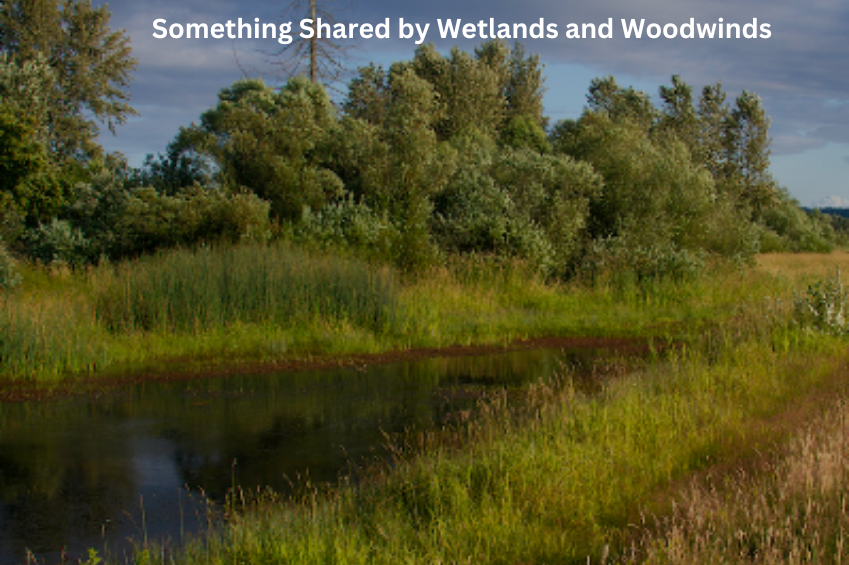In this piece, we delve into an intriguing connection that may not be immediately apparent: the similarities between wetlands and woodwind instruments. This exploration not only broadens our knowledge to something shared by wetlands and woodwinds but also deepens our appreciation for both the natural and musical domains. For puzzle enthusiasts, such as those tackling the NYT Crossword, identifying these connections can turn a difficult clue into a moment of revelation. We examine the intersection of the natural world and human craftsmanship, focusing on the common element of reeds, which provides enlightening insights.
Crossword Clue Answer: The Significance of Reeds
The solution to the clue “What do something shared by wetlands and woodwinds?” is reeds. This simple answer unveils a significant link between the environment and musical instruments, both of which incorporate reeds crucially.
Essential Functions:
The Environmental Importance of Reeds in Wetlands Reeds transcend their role as mere plants, serving as essential environmental components. Their roles include:
- Biological Filtering: Reeds serve as natural biofilters, purifying water by absorbing pollutants, thereby enhancing water quality.
- Habitat Provision: Reeds offer critical shelter and support for various species, including birds, insects, and aquatic life.
- Erosion Control: The robust root systems of reeds stabilize soil, preventing erosion and supporting wetland health.
- Carbon Absorption: Reeds are significant in carbon capture, aiding in climate change mitigation.
- Biodiversity Enhancement: As keystone species, reeds support diverse biological communities in wetlands.
- Historical Utility: Reeds have been utilized historically for building, crafting, and more.
Musical Contributions:
The Influence of Reeds in Woodwind Instruments In the realm of music, reeds are fundamental in the production of sound in woodwind instruments. Their impact includes:
- Sound Generation: In instruments like clarinets and saxophones, reeds are vital for sound production, vibrating as air flows through.
- Tone Adjustment: The choice and maintenance of reeds substantially affect the musical tone and quality.
- Craftsmanship: Musicians carefully select and adjust reeds to suit their sound preferences.
- Cultural Diversity: Various cultures have created unique woodwind instruments that feature reeds in different ways.
- Economic Role: The reed industry supports both musicians and artisans specializing in reed crafting and customization.
- Sustainable Alternatives: The industry is moving towards sustainable reed harvesting and synthetic substitutes to conserve natural reed beds.
Intersection of Ecology and Music:
The Convergence of Natural and Musical Worlds This section emphasizes the unexpected overlaps between ecological processes and musical innovation:
- Sustainable Harvesting: The dual benefits of sustainable reed harvesting on music quality and wetland preservation.
- Environmental Consciousness: Increasing ecological awareness among musicians and instrument makers.
- Educational Ventures: Utilizing music to promote understanding of ecological balance and conservation.
- Cultural Interactions: The global influence of reed instruments enriches international music scenes.
- Design Innovations: Developments in instrument design that honor ecological principles.
- Artistic Motivation: How the natural ambiance of wetlands inspires musical compositions.
Cultural Resonance:
The Historical and Cultural Impact of Reeds Reeds hold significant historical and cultural value:
- Ancient Applications: Reeds have been used historically for construction, writing, and more.
- Symbolic Representations: In various cultures, reeds represent adaptability, resilience, and life by water.
- Musical Evolution: The development of reed instruments reflects diverse cultural expressions over time.
- Archaeological Revelations: Ancient reed instruments provide insights into historical music and societal structures.
- Folklore and Music: Global folk music heavily relies on reed instruments, each narrating distinct cultural tales.
- Modern Uses: Contemporary adaptations of reeds blend traditional and modern uses.
Future Prospects: Advancements in the Use of Reeds
Looking forward, the role of reeds in both environmental and musical fields is set for promising developments:
- Conservation Initiatives: Strengthened efforts to protect wetland areas to maintain natural reed populations.
- Technological Progress: Innovations in synthetic reeds that replicate natural characteristics without harming the environment.
- Educational Outreach: Expanding educational initiatives to raise awareness about the importance of wetlands and reeds.
- Ecological-Musical Partnerships: Collaborative projects that unite ecologists and musicians to emphasize sustainability.
Conclusion
A Harmony of Connections Our exploration into the shared aspects of wetlands and woodwinds unveils a complex interplay of ecological and musical links. This enriched understanding not only deepens our appreciation but also encourages a commitment to preserving our natural and cultural heritages. As we continue to explore these connections, we ensure that the legacy of reeds resonates across both natural and melodic landscapes.

